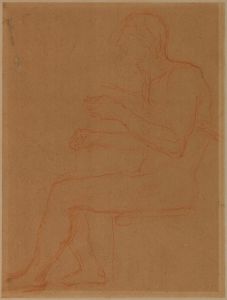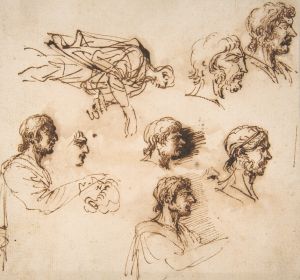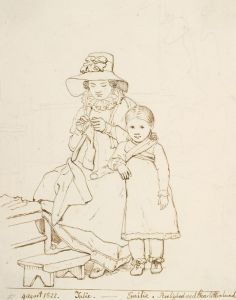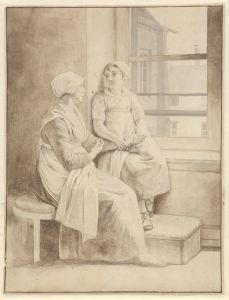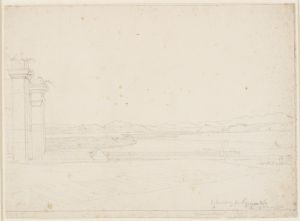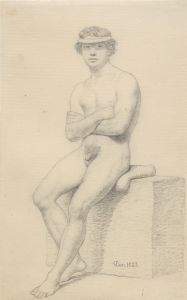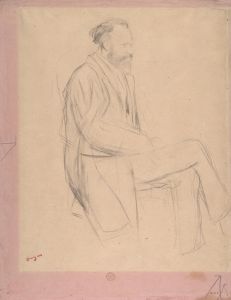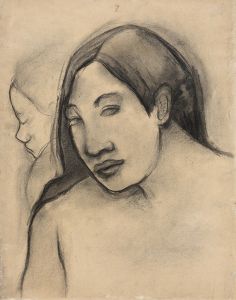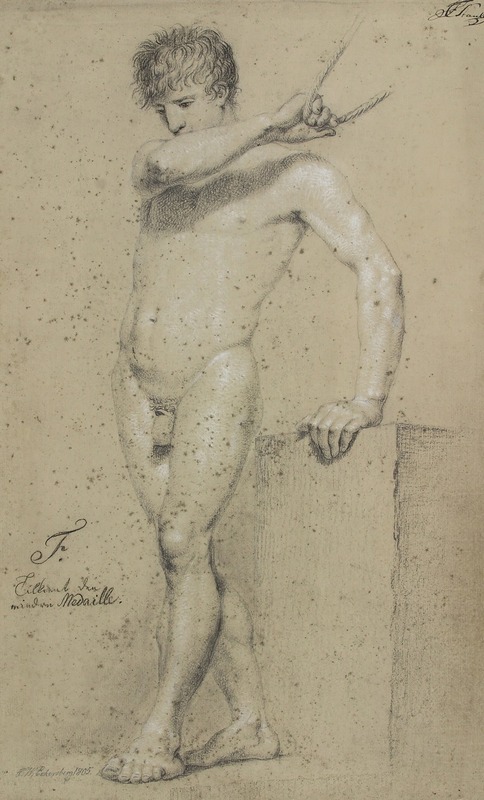
Mandlig stående model, profil til venstre
A hand-painted replica of Christoffer Wilhelm Eckersberg’s masterpiece Mandlig stående model, profil til venstre, meticulously crafted by professional artists to capture the true essence of the original. Each piece is created with museum-quality canvas and rare mineral pigments, carefully painted by experienced artists with delicate brushstrokes and rich, layered colors to perfectly recreate the texture of the original artwork. Unlike machine-printed reproductions, this hand-painted version brings the painting to life, infused with the artist’s emotions and skill in every stroke. Whether for personal collection or home decoration, it instantly elevates the artistic atmosphere of any space.
"Mandlig stående model, profil til venstre" (translated as "Male Standing Model, Profile to the Left") is a painting by the Danish artist Christoffer Wilhelm Eckersberg, often referred to as the father of Danish painting. This work is an example of Eckersberg's dedication to studying the human figure and his commitment to realism, which became a hallmark of the Danish Golden Age of painting.
The artwork depicts a male model standing in profile, facing to the left. The figure is nude, showcasing Eckersberg's focus on anatomical accuracy and his interest in the naturalistic representation of the human body. The model's pose is calm and balanced, with the weight distributed evenly, reflecting the classical ideals of harmony and proportion that influenced Eckersberg's work. The background is plain and neutral, ensuring that the viewer's attention remains on the figure itself.
Eckersberg painted this work during his tenure as a professor at the Royal Danish Academy of Fine Arts in Copenhagen, where he taught from 1818 until his death in 1853. As part of his teaching, Eckersberg emphasized the importance of life drawing and the study of live models, which was a relatively progressive approach at the time. This painting is likely a product of these academic exercises, as it exemplifies the meticulous observation and technical skill that Eckersberg instilled in his students.
The painting is notable for its simplicity and clarity, characteristics that define much of Eckersberg's oeuvre. By focusing on the human form without embellishment or narrative context, Eckersberg sought to capture the universal beauty and dignity of the human body. This approach aligns with the neoclassical ideals that were prevalent in European art during the early 19th century, which emphasized order, balance, and a return to classical antiquity.
"Mandlig stående model, profil til venstre" is housed in the collection of the Statens Museum for Kunst (National Gallery of Denmark) in Copenhagen. The museum holds a significant number of works by Eckersberg, reflecting his importance in Danish art history. This painting, like many of his studies of the human figure, provides insight into his artistic process and his role in shaping the development of Danish art during the Golden Age.
Eckersberg's dedication to life drawing and his influence on his students helped establish a strong tradition of figure painting in Denmark, which continued to flourish after his death. This work remains an important example of his contribution to art and his ability to combine technical precision with a deep appreciation for the human form.





